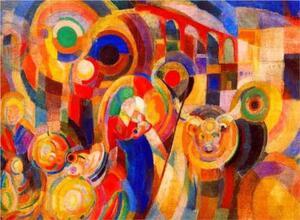The Art of Gender Representation
“I get so lonely, I forget what I'm worth/We get so lonely, we pretend that this works/I'm so ashamed of myself think I need therapy/I'm sorry I'm not more attractive/I'm sorry I'm not more ladylike/I'm sorry I don't shave my legs at night/I'm sorry I'm not your baby mama/I'm sorry you got karma comin' to you/Collect your soul, get it right.”
The words to SZA’s “Drew Barrymore” ring in my ears as I write this; the song serves as an anthem for the teen angst and insecurities I’ve been feeling since I got home from school today. Feeling lonely, feeling like I’m not living up to the standard of female beauty: SZA articulates the thoughts that have been running through my mind.
I appreciate that SZA shares her own anxieties, especially because she does so in a tone that I interpret as her being caught between wanting to embrace herself unapologetically and struggling with self-doubt. It’s a problem that I face as well, and it’s reassuring to know that a woman who I admire so much also deals with these issues.
To me, this is why female representation in art is crucial. Girls and women need to have artists with whom they can identify. These influential female artists give voice to issues that so many of us experience, and having these narratives as a part of our pop culture helps validate these feelings.
Since discovering SZA last summer, there is seldom a time when you won’t catch me listening to her, or Noname, or Maggie Rogers, or Jorja Smith, or a handful of other female artists whose music shows both vulnerability and strength. The experiences and feelings expressed are unique to each artist, yet listening to them also feels like a collective celebration of the female experience.
Beyond musical artists, female representation in visual arts is also critical, but unfortunately lacking. When you look around a museum, works by notable female artists, such as Georgia O'Keeffe, Frida Kahlo, and Cindy Sherman, either stand alone among a sea of art by male artists, or are missing completely.
According to Guerilla Girls, in 2012 less than 4% of the artists in the Modern Art sections at The Metropolitan Museum of Art were women. At The Boston Museum of Fine Arts, only 11% of the artists were women; in The Art Institute of Chicago’s modern galleries, 10% of the artists were women.
Another example of the gender disparity in the art world: Sonia Delaunay is a Jewish painter who helped found the Orphism art movement alongside her husband Robert Delaunay. However, of the two of them, her husband is far more recognized. As a young Jewish woman, this sends a message to me that even when two people are seemingly equally responsible for a contribution, the man is the only one deserving of credit and recognition. As a young Jewish woman, I just can’t accept that.
All artists, regardless of medium or gender, have something to say about the world, and their message is invariably influenced by their specific point of view, which includes gender identity. While I’m not saying that women and girls can’t relate to art produced by non-female artists, I am saying that it’s important for all people to see themselves reflected in some way in pop culture. Our pop culture shows us which points of view our society values, so when female perspectives are missing, it sends a very clear, and harmful message.
Female artists––musicians, visual artists, and other artists of all kinds––should be appreciated for their work. Representation matters. Every girl and woman should be able to have their own SZA with whom they can identify. With more female representation in the art industry, there will be a greater variety of perspectives to honor. We should all pay attention to the lack of female representation in art, and we should ensure that the art we consume includes a wide variety of perspective and identities.
This piece was written as part of JWA’s Rising Voices Fellowship.








So interesting!